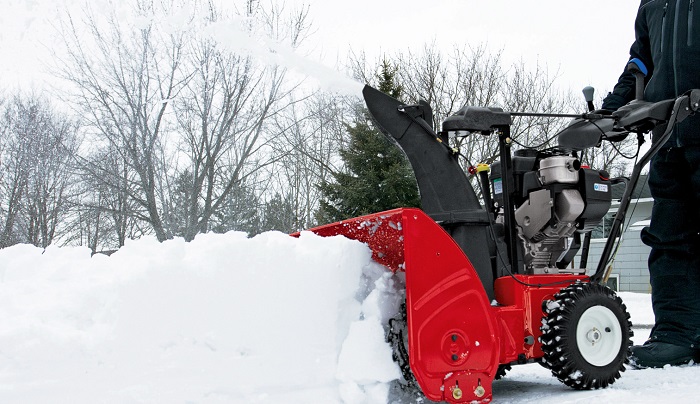SNOW BLOWER SAFETY TIPS: KEEP BEST PRACTICES IN MIND THIS WINTER
Outdoor Power Equipment Institute reminds home and business owners about safe handling ??

ALEXANDRIA, Va. ??? With winter snows arriving, homeowners, contractors, and business owners will again rely on their snow blowers to clear driveways and walks. The Outdoor Power Equipment Institute (OPEI) is offering tips for safe and correct use of snow blowers.
???Your indispensable winter friend, the snow blower is ready to be powered up and it???s important to keep safety in mind,??? says OPEI President and CEO Kris Kiser. ???Be sure to prepare and consider the following tips before you use your equipment:
PREPARE BEFORE IT SNOWS
Review your owner???s manual and check your equipment. Check your owner???s manual for safe handling procedures from your manufacturer. If you forgot to drain the fuel last winter before storing your snow blower, drain the tank now. Adjust any cables. Check the auger (the snow blower should always be completely powered off when you are checking the equipment). Know how to operate the controls. You should be able to shut off your equipment quickly.
Prepare your fuel and handle it properly.??It’s important to have the right fuel on hand for your snow blower ??? movement and fuel availability may be limited during a snowstorm. Be sure to use the correct fuel, as recommended by your equipment’s manufacturer (for more information on fueling properly see www.LookBeforeYouPump.com). Fill up the fuel tank outside before you start the engine and while the engine is cold. Never add fuel to a running or hot engine.
Be sure to clean the area you intend to clear with your equipment. Snow can sometimes hide objects that if run over by a snow blower, may harm the machine or people. Doormats, hoses, balls, toys, boards, wires, and other debris should be removed from the areas you intend to clear.
Dress appropriately. Wear safety glasses and footwear that can handle slippery surfaces.
OPERATE YOUR EQUIPMENT SAFELY
KEY SAFETY TIP: Never put your hands inside the auger or chute.
Use a clean out tool (or stick) to unclog snow or debris from your snow blower. Your hands should never go inside the auger or chute. Make sure the snow blower is in the off position before addressing any clogs.
Turn OFF your snow blower if you need to clear a clog. If you need to remove debris or unclog snow, always turn off your snow blower. Wait for all moving parts to come to a complete stop before clearing any clogs or debris.
Only use your snow blower in visible conditions. Never operate the snow blower without good visibility or light.
Aim your snow blower with care. Never throw snow toward people or cars. Do not allow anyone to stand in front of your snow blower. ??Keep children or pets away from your snow blower when it is operating.
Use extreme caution on slopes and hills. Use caution when changing directions on slopes. Do not attempt to clear steep slopes.
Know where your cord is. If you have an electric powered snow blower, be aware of where the power cord is at all times. Avoid tripping. Do not run over the power cord.
More safety tips and information are available at www.opei.org.
About OPEI The Outdoor Power Equipment Institute (OPEI) is an international trade association representing more than 100 power equipment, engine and utility vehicle manufacturers and suppliers. OPEI is the advocacy voice of the industry, and a recognized Standards Development Organization for the American National Standards Institute (ANSI) and active internationally through the International Standards Organization (ISO) and the International Electrotechnical Commission (IEC) in the development of safety and performance standards. OPEI is managing partner of GIE+EXPO, the industry???s annual international trade show, and the creative force behind the environmental education program,??TurfMutt.com. OPEI-Canada represents members on a host of issues, including recycling, emissions and other regulatory developments across the Canadian provinces. For more information, visit www.OPEI.org.
